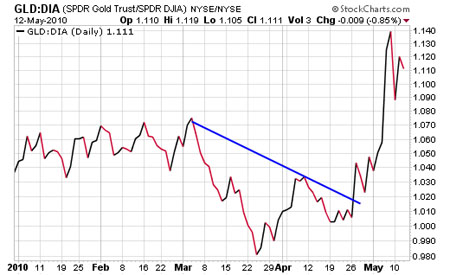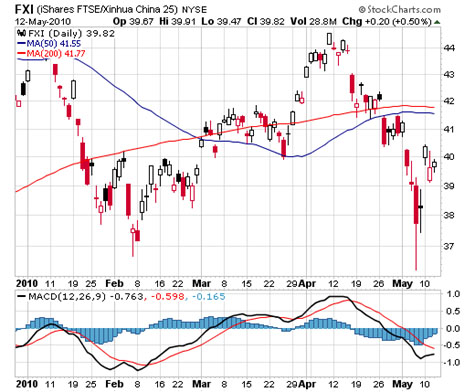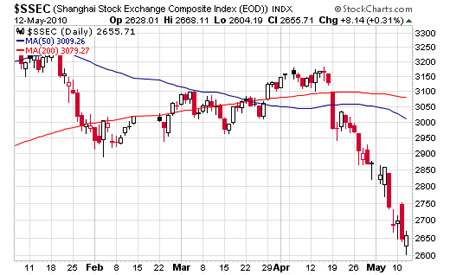Personal Finance
Crime is far more common than logic. This is the refuge of bankers.
In capitalism’s end game, leveraged debt fatally destabilizes the supply and demand dynamic necessary for stable economic activity. Understanding this is critical to understanding why capitalism today is failing.
In the banker’s ponzi-scheme of credit and debt, debt-based money is created through central bank credit. Usually, the central banks’ constant expansion of the money supply results in rising prices, i.e. inflation. In the end game, however, this is no longer true.
In the end game, when demand slows, excess supply forces prices lower resulting in a deflationary trend called low inflation. In the end game, low inflation continues until demand falls so low the velocity of money is no longer sufficient to support aggregate economic activity; a monetary phenomena that ends in a catastrophic deflationary depression similar to hypotension, a medical condition where blood pressure falls until fatal.
In June 2009 I wrote in my article, Bull Markets, Bullsh*t and Bubbles:
Deflation arises in the wake of extraordinary speculative bubbles and is caused by a collapse in demand which happens after such bubbles pop, when producers/sellers chase buyers hoping to turn inventories and soon-to-be illiquid assets into cash in order to pay down ever-compounding debts.
Deflation happened in the 1930s in the Great Depression, in the 1990s [through today] in Japan and is now again spreading in the US, the UK, [the EU] and other overly mature late-stage capitalist economies; and akin to a deadly economic cancer, deflation, once metastasized, is exceedingly difficult to eliminate.
…The serial dot.com and US real estate bubbles so distorted the global demand and supply dynamic that memories of the 1930s depression have now been re-awakened, memories that will soon become reality as deflation spreads around the world.
…Bubbles and busts have now replaced the expansions and contractions common to early stage capitalism. We are now in late-stage capitalism, where debt instead of credit is the critical factor and the bond markets, not equity markets, determine the economic future.
CONFUSION IN TODAY’S MARKETS
Today, when it looks like a bull, walks like a bull and acts like a bull, it’s probably a bubble. –Bull Markets, Bullsh*t and Bubbles, DRS, 2009
In late-stage capitalism, stock market highs are like a tan on a dying man. Investors formerly seduced by higher stock prices abandon equities as chances of a bubble bursting increase. When this happens, investors move into bonds—capital’s safe haven of choice. In the end game, however, bond markets are where the final bloodbath of capitalism’s debt-based money will take place.
The current stock market bubble is like no other. Even though stock prices are reaching nominal highs, trading volumes are falling. This is the first time in history this has happened.

Two charts from über analyst Gordon T Long provide further evidence that stock markets today are radically different from previous markets.

Today, the Fed and other central banks are so desperate for economic growth they have exacerbated systemic instability by underwriting directly or indirectly the rise in today’s asset markets. On June 15th, the Official Monetary and Financial Institutions Forum, a central bank research and advisory group, noted that central banks and other public sector institutions have, to date, invested $29 trillion in global markets.
Regarding today’s unprecedented market conditions, on June 16th, Citigroup strategists led by Matt King in London wrote: We blame the wave of central-bank liquidity, which has pushed up asset prices irrespective of fundamentals…This creates a vicious circle: ever-higher prices, ever-less trading and liquidity.
Not only has the Fed’s unprecedented and artificial insemination of liquidity distorted equities, bonds, too, are grossly at variance with traditional metrics. On June 2nd, Bloomberg News reported: After unprecedented stimulus by the Fed and other central banks made many traditional models useless, investors and analysts alike are having to reshape their understanding of cheap and expensive as the global market for bonds balloons to $100 trillion.
On June 18th, Mohamed El-Erian, chief economic advisor to Allianz and former co-CEO of PIMCO, the world’s largest bond fund, warned investors of dangers regarding continued central bank support of markets. El-Erian advised: …rather than continuously increasing exposure to ever-rising markets, it is time for highly exposed investors to gradually take some chips off the table.
Instead of betting vast sums on an uncertain future in uncertain markets, smart money institutional investors are now, as El-Erian advised, taking some chips off the table. The dumb money, i.e. private/retail investors, however, are still, literally, buying the bull.

As the odds of systemic collapse rise, safety becomes paramount, even when such safety offers little or no returns. Since peaking in the 1980s, US Treasury interest rates have fallen to almost zero as central banks made credit increasingly cheaper, futilely hoping that with more and cheaper credit, markets can achieve exit speed. In the end game, they can’t.
Despite today’s unprecedented lack of yield, growing distrust of liquidity-driven equity markets, investors are finding refuge in the perceived ‘safety’ of bonds.

Since 2000, investments in bonds are triple the amount invested in equities.

In the end game, the safety of bonds is as illusory as it is fatal.
THE END GAME: PANIC IN THE BOND MARKETS
In 2012, David Stockman, Ronald Reagan’s former budget director, was asked by the editors ofThe Gold Report what catalyst could bring the end game to a final resolution. Today, Stockman’s answer is even more relevant as the end game is even deeper into its final stage.
The Gold Report: If we are in the final innings of a debt super-cycle, what is the catalyst that willend the game?
David Stockman: I think the likely catalyst is a breakdown of the U.S. government bond market. It is the heart of the fixed income market and, therefore, the world’s financial market.
Because of Fed management and interest-rate pegging, the market is artificially medicated. All of the rates and spreads are unreal. The yield curve is not market driven. Supply and demand for savings and investment, future inflation risk discounts by investors – none of these free market forces matter. The price of money is dictated by the Fed, and Wall Street merely attempts to front-run its next move.
As long as the hedge fund traders and fast-money boys believe the Fed can keep everything pegged, we may limp along. The minute they lose confidence, they will unwind their trades.
On the margin, nobody owns the Treasury bond; you rent it. Trillions of treasury paper is funded on repo: You buy $100 million (M) in Treasuries and immediately put them up as collateral for overnight borrowings of $98M. Traders can capture the spread as long as the price of the bond is stable or rising, as it has been for the last year or two. If the bond drops 2%, the spread has been wiped out.
If that happens, the massive repo structures – that is, debt owned by still more debt – will start to unwind and create a panic in the Treasury market. People will realize the emperor is naked.
TRAPPED IN THE HELL OF BOND MARKET ILLIQUIDITY
An illiquid asset is an asset which is not readily salable (without a drastic price reduction, and sometimes not at any price) due to uncertainty about its value or the lack of a market in which it is regularly traded.
http://en.wikipedia.org/wiki/Market_liquidity
The recent and spectacular growth of bond markets has brought with it an equally recent and dangerous downside, i.e. the inability of bond markets to sell what investors have bought. Should bond prices drop 2% as per David Stockman, a panic in the Treasury market will ensue as illiquid markets will prevent investors from selling their bonds as prices fall.
Traditionally, bond dealers provided the liquidity bond markets need to function. After the 2008 financial crisis, however, the ability of bond dealers to do so precipitously declined as the volume of bond purchases inversely grew.
In Mile wide, inch deep – bond market liquidity dries up, a MarketWatch commentary, Ben Eisen wrote: The combination of smaller holdings by dealers and a surge in the amount of outstanding corporate debt suggest that there’s more inventory to change hands with fewer institutions willing to facilitate those transactions. Whereas dealers once held about 4% of all corporate debt on their balance sheets, they now hold closer to 0.5%…

The increasing mismatch between rapidly growing markets and disappearing liquidity will end in a crisis of unprecedented proportions should interest rates rise, driving the value of previously issued bonds lower; resulting in a financial bloodbath where investors are trapped in markets unable to liquidate declining assets.
On June 24, a MoneyNews article, Bond Market Has $900 Billion Mom and Pop Problem When Rates Rise noted that …Investors have piled more than $900 billion into taxable bond funds since the 2008 financial crisis, buying stock-like shares of mutual and exchange traded funds to gain access to infrequently-traded [i.e. illiquid] markets…
If and when the Fed raises interest rates, the concern is that the price of bonds will plunge and mom and pop investors will exit bond funds, leading to an exodus that’ll cause credit markets to freeze up…and a free fall in prices.
On June 16th, the Financial Times reported: Federal Reserve officials have discussed whether regulators should impose exit fees on bond funds to avert a potential run by investors, underlining concern about the vulnerability of the $10 trillion corporate bond market…Officials are concerned that bond funds are becoming ‘shadow banks’, because investors can withdraw their money on demand, even though the assets held by the funds can be hard to sell in a crisis.
Today, credit and debt-based markets have reached their limits and no markets are safe from their coming collapse. Stocks, bonds and commodities will all fall, either serially or as one. This is the bankers’ end game.
GOLD AND SILVER AND THE COLLAPSE OF THE PRESENT PARADIGM
The banker’s house of cards is built on a foundation of paper money. In the beginning, gold and silver provided the stability that paper cannot offer. In 1971, gold was removed from the international monetary system and the cotter pin holding the bankers’ ever-towering edifice of credit and debt was no more.
We are in the end game, where paper promises have replaced the stability of gold and silver. The consequences are there for everyone to see. Equity markets, bond markets, commodity markets have all been poisoned by today’s excessive levels of credit and debt.
Gold and silver are the barometers of systemic financial distress. The bankers’ have done their utmost to disable the most telling indicators of their present disarray and imminent demise. Don’t be fooled, however. In the end game, gold and silver are not investments. They are life insurance policies and when the present system dies—and it will—the payout will justify your faith.
My present youtube video is the 3rd in my current series, Freedom and the Matrix. Once again, central banking is discussed, albeit from another angle. See http://youtu.be/sh5ljkCB5CE.
Take care of you and yours
Take care of others
Buy gold, buy silver, have faith.
Darryl Robert Schoon

Gold was being accumulated prior to recent upward thrust, thus recent move was genuine Richard Russell argues below. Also Richard’s biggest worry is the US Dollar, and he looks at its technical condition. This piece was done on June 20th, just after the big thrust up to a close over $1320 – Editor Money Talks
“Below I show gold along with its On-Balance-Volume at the top of the chart. Note that OBV tuned up before the big up-thrust last week. This tells me that the huge move in gold was not just a violent one-day short-covering panic, but gold was being accumulated prior to the up-thrust.

Following the big upward surge in the precious metals, I wanted to see whether it was a one-day short covering panic or whether we were seeing a continuation of the gold bull market. The daily chart below shows the action prior to the big surge which took gold above both of its moving averages.

Below we see HUI, the NYSE “gold bugs index.” Note that the pattern we see here is that of a huge head-and-shoulders bottom. The P&F target is 316. This formation has been building for many months, and thus when the latest surge arrived, the surge can hardly be seen as a sudden one-day short covering panic. If HUI can hit the 264 box, I expect an upward explosion.

The precious metals are still distrusted and even hated by the general public. Before this bull market is over, I expect to see a mad rush and melt-up as the pros and the public scramble headlong into gold and silver.
….also from Richard
The price of protein (meats, fish, beans, bacon and nine other proteins) is heading higher. Protein prices jumped 28% in the last five years. Protein prices jumped five percent in 2014. This according to Bloomberg.
Throughout the year 2014, I have advised my subscribers to do as I have done, and that is to load up with physical silver and gold. Gold is way up this year; better than many hedge funds have done. And sitting with physical silver and gold has been a lot easier on the nerves than sitting with a portfolio of assorted stocks. What will I do from here? I’ll sit with my silver and gold — along with my lone preferred stock — Tri Continental Preferred.
My biggest worry for the United States is our dollar. The dollar is part of almost every nation’s reserves. And as you can imagine, nations that hold dollars are on edge. They see the Fed pumping out trillions of new dollars, and they know that the more dollars — the weaker the dollar.
I’m not going to talk about the sanity of the Fed’s dollar creation, I’m just going to look at the technical condition of the dollar. The P&F chart below depicts the dollar. The dollar just hit the 79 box which set off a bear signal with a target of 73. Thus, the action of the dollar will be critical in the weeks ahead. As the dollar declines, it will put upside pressure on all commodities, and this, in turn, will put pressure on the middle class, which, from what I understand, needs food in order to survive.

Late Notes — The precious metals continue inching higher with gold closing up 3 to 1321 and silver up 13 cents to 21.04. Just to make things difficult, the gold miners backed off with GDXJ closing down 1.99 to 40.00. After looking over the charts, I continue to think that gold has made its lows and from here on it will take patience as the universe of precious metals slowly and subtly creeps higher.
Gold has had a habit of declining every Friday, so this coming Friday’s action should provide a hint as to which way gold is going. In the meantime, China continues to be the world’s leading accumulator of gold in its long term strategy of preempting the dollar. From what I gather, China has now passed India as the worlds biggest accumulator of gold. China is famous for its patience and its long term strategies. I hope my subscribers enlist a bit of Chinese patience as they continue to accumulate silver and gold.”

“Below is a chart of 11 developed-market home price indices indexed to 100 as of Q1 2000. The data is taken from the Dallas Federal Reserve’s analysis of global home prices, and uses the real prices of homes: prices adjusted for inflation using the PCE deflator for each country in question.” Whole article HERE


A critical lesson about a certain kind of risk that investors often ignore is found in this heartbreaking story about about a cat. A lesson that really applies to the market evironment we have today.
Eric J. Fry specialized in long/short equity strategies during a 20 year Wall street career. This really enjoyable  and valuable read was developed from unique insights on the societal and economic influences that create opportunity… or risk. – Editor Money Talks
and valuable read was developed from unique insights on the societal and economic influences that create opportunity… or risk. – Editor Money Talks
In life, there are things, and there are treasures… Things are common. Treasures are rare.
Not long ago, I lost one of my treasures – a cat named Uzi. Her death reminded me just how devastating a certain kind of risk can be. The risk I’m talking about is called “asymmetric risk”… and it is one that investors often ignore or underestimate.
Asymmetric risks often seem highly unlikely, which makes them easy to ignore. But as Uzi’s heartbreaking story shows, an “unlikely” risk is not the same thing as a “manageable” risk.
Uzi was “just a cat.” I know that. But that fact did not make her any less of a treasure. She was precious to me… which is why I spent hundreds of hours during her brief lifetime trying to keep her alive.
I live next to an open hillside that is home to a variety of wildlife, notably coyotes. But this same hillside is also home to rabbits, mice, lizards, birds and numerous other varmints that excite the predatory instincts of a small feline. So it was next-to-impossible to keep Uzi off that hillside. She would hunt up there almost every day… And almost every day, she would return to the house with some sort of mauled “trophy.”
As long as Uzi conducted her hunting forays during daylight hours, the risks were very small that the hunter would become the hunted. But as soon as the sun dipped below the horizon, the balance of risk would shift dramatically against Uzi.
At nightfall, nocturnal predators like coyotes and owls make the rules for small felines. The problem was, at nightfall, felines still make the rules for mice. And so Uzi was never keen to abandon the thrill of the hunt to return to the relative ennui of watching prime-time television from my couch.
Given the chance, she would roam the hillside at night. But she was rarely given the chance. I was obsessive about keeping her indoors at night. In fact, I was obsessive about locking her indoors well before sunset.
On those rare occasions when she remained outside after sunset, I would scour the hillside until I found her. Sometimes the search lasted a few minutes; sometimes a few hours. But I would continue the search until I found her. Only twice during her two-year life did I fail to find her. Once, she spent the entire night outside. Once she returned about 1:00 in the morning with a mouse in her mouth.
On both occasions, I feared the worst. I assumed a coyote had found her before she found her way back to the house. Then one night, the worst came to pass. I searched for Uzi off and on from 5:00 p.m. until 2:00 a.m. Fifteen minutes after I walked back into the house the last time, I heard the chilling yelps of coyotes that had just captured prey.
Their prey was my cat.
I was heartbroken… and still am. But as I mentioned at the outset, this little story is not merely about Uzi and me; it is a universal story about asymmetric risk.
Investors take note…
An asymmetric risk has nothing to do with the odds of a given risk, but everything to do with the consequences of a given risk. In Uzi’s case, the odds that a coyote would kill her were relatively low, even on a hillside frequented by coyotes. In fact, the numerical odds were hugely in her favor. She spent more than 50 evenings on that hillside before finally encountering a fatal evening.
So let’s say the odds were 50-to-1 in her favor. But the consequences of that risk were massively asymmetric. In our hypothetical 50-to-1 risk, Uzi returns to the house alive 49 times out of 50. But one time in 50, coyotes kill her. By the numbers, that’s a good risk. In reality, that’s a horrible risk.
No investor would take a bet like that… at least not knowingly.
But investors take asymmetric bets every day. For example, they’ll buy the low-yielding long-term bonds of a heavily indebted nation… or they’ll hold 100% of their net worth in a single currency issued by a heavily indebted nation… or do both of these things at once!
Asymmetric risks can succeed for long periods of time… and that’s exactly why they can seem harmless or irrelevant. But when asymmetric risks fail, they usually fail catastrophically. That’s not a smart risk.
Understanding your potential reward is worthwhile. Understanding your potential risk is everything.
Good investing,
Eric Fry
for The Daily Grind
|
P.S. The Daily Grind is the official communiqué of Free Market Café. So if you’d like even more of a good thing, please check out the Free Market Cafe’s Facebook page here. |

Argentina, Hungary, France, Portugal, & Ireland, have confiscated some or all Retirement Accounts – Editor Money Talks
 Don’t Let Obama Redistribute Your Money
Don’t Let Obama Redistribute Your MoneyNOTE: This is a message from our friends at Personal Liberty Digest that we think you’ll enjoy. – Bill Bonner
“Bail-Ins”… Coming to a Federal Government Near You… Does Obama’s MyRa Signal the Beginning of Wealth Confiscation?
According to USDebtClock.org, our total obligations are a stunning $126 trillion dollars… not the $17 trillion the feds would like you to believe.
That’s more than $400,000 of debt for every man, woman and child in America today.
I’m assuming you don’t have the extra cash to spare, so Obama has just revealed exactly how he plans to get it out of you… MyRA!
Right now, I believe we are on the brink of the greatest money grab in human history.
And they won’t come knocking on your door to get it from you… they don’t have to. They’ll take it with a few keystrokes on a computer.
It’s the Great American Confiscation of 2014-2015 and insiders reveal the Federal Government is seriously considering “nationalizing” your privately held IRA or 401(k). Right now, there’s $21 trillion in CASH sitting in private retirement accounts.
And to politicians your money is a veritable “pot of gold.”
Think it sounds far-fetched? Well, it’s already happening. Retirement accounts have been confiscated in Argentina, Hungary and Portugal… and a dozen other countries—including the European Union—have similar plans in place.
Think it can’t happen in the U.S.? Well, think again!
Now more than ever, it’s time to take drastic measures to keep your hard-earned savings out of the government’s grubby hands.
Good luck—my friend,
Bob Livingston
Editor, The Bob Livingston Letter™
My name is Bob Livingston and I’ve published The Bob Livingston Letter™ since 1969.
Claim my FREE urgent report that can show you how to:
• Bank in secret to avoid becoming a prime target!
• Use your life insurance and special “trusts” to protect your assets!
• Make your transactions and online communications invisible!
• Avoid IRS red flags!
• And much, much more to protect yourself from this grievous Government overreach!
Don’t wait till it’s too late to protect your money, your privacy and your life from the Government or any money-grubbing opportunist spying on you! I urge you—Read my FREE Report NOW!
Good luck—my friend,
Bob Livingston
Editor, The Bob Livingston Letter™












